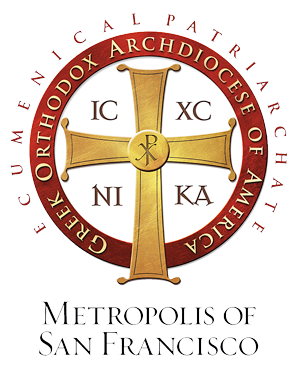The Early Church
About two thousand years ago, Jesus Christ, the Son of God, came to earth and founded the Church, through His Apostles and disciples, for the salvation of man. In the years which followed, the Apostles, inspired by the Holy Spirit, founded many Christian communities, all united in faith, worship, and in the partaking of the Holy Eucharist, the breaking of the bread.
The churches founded by the Apostles themselves include the Patriarchates of Constantinople, Alexandria, Antioch, Jerusalem, and Rome. The Church of Constantinople was founded by St. Andrew, the Church of Alexandria by St. Mark, the Church of Antioch by St. Paul, the Church of Jerusalem by Sts. Peter and James, and the Church of Rome by Sts. Peter and Paul. Those founded in later years through the missionary activity of the first churches were the Churches of Sinai, Russia, Greece, Serbia, Bulgaria, Romania, and many others.
During the 1st and 2nd centuries the Church faced terrible persecution, most notably from the Emperor Nero in 64-68 AD, and the Tetrarch Diocletian from the end of the 2nd century until the rise of the Emperor Constantine in 313. In the face of these persecutions, the Church offered many martyrs to Christ and continued to grow, fueled by the Holy Spirit and the blood of those who had given up their lives for their Faith.
When the Emperor Constantine legalized the practice of Christianity in the year 313, the Church emerged from hiding and would eventually become the official religion of the Byzantine Empire. The 4th, 5th, and 6th centuries were a period of a great growth for the Church, both in the number of Christian souls and in the number of monasteries and churches that were built. It was during this time that the great cathedrals of Constantinople and Jerusalem were built, and the monasteries of Palestine and Asia Minor thrived while contributing greatly to the Church’s liturgical worship, as well as its hagiographic and spiritual literature. The canon of the New Testament was also compiled and officially canonized during this period of Christian growth.
The Ecumenical Councils
The first thousand years of Christianity witnessed to a common faith throughout the Christian world, both in the East and the West. During this period in the Church’s life there were doctrinal disputes: Arians, Nestorians, Monophysites and others introduced erroneous theologies during the 4th and 5th centuries; “Iconoclasts” attacked the use of icons during the eighth. Such disputes were settled as bishops and Christian representatives throughout the entire world gathered together in council. The decisions of seven of these councils were universally accepted by the faithful and became known distinctively as Ecumenical. The First Ecumenical Council, held at Nicea in 325 AD, and the Second, held at Constantinople in 381, established the Church’s Creed, or Statement of Faith. In this Creed, Christians affirm their belief in one God in three persons, Father, Son, and Holy Spirit; They affirm that Jesus Christ is the Son of God, being fully God and fully man, one in essence with the Father and the Holy Spirit. The Nicean Creed is read to this day by the Orthodox Christian faithful at each Eucharistic gathering.
The Great Schism
The break in communion between the East and West, known as the Great Schism, came in the year 1054. This schism was the result of growing differences between the East and West, as the Church in Rome began altering some of the ancient doctrines, (such as inserting the phrase “filioque” into the Creed, thus subordinating the Holy Spirit) and insisted on the supremacy of the Pope over the other Orthodox Patriarchs. In time, Rome added newer doctrines (papal infallibility, immaculate conception, etc.) that pushed them even further away from theological orthodoxy. The divide between the two communities was exasperated by the unfortunate plundering of Orthodox churches and monasteries during the Crusades of the 11th through 13th centuries.
Further fragmentation in the West
In the 16th century Protestant Reformers made further changes and deletions to the Faith and Biblical Canon. All the while, the remaining four ancient Patriarchates continued steadfast in the same fullness of faith handed down from Christ Himself through His Holy Apostles. Through extensive missionary efforts these four centers were later joined by the Patriarchate of Moscow and other Patriarchates—constituting the fifteen autocephalous churches today, united as One Holy Catholic and Apostolic Orthodox Church.
Follow this link for a visual Timeline of Church History.
Recommended reading:
The Orthodox Church by Timothy Ware (Bishop Kallistos Ware)
This book is available in our Church bookstore


